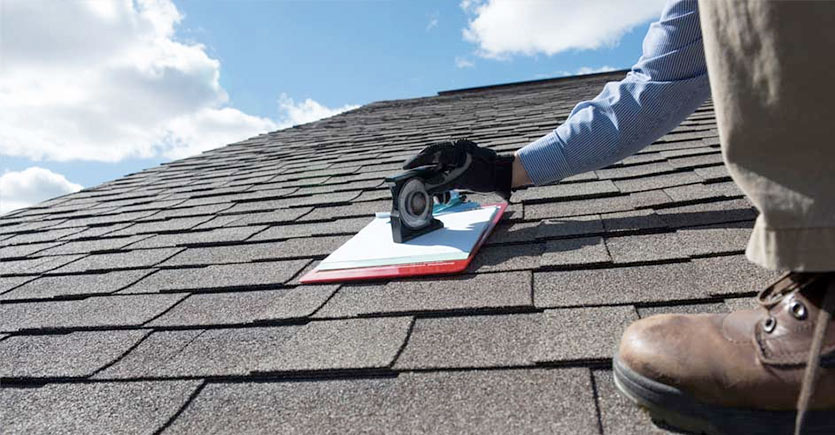How to Review Different Roof Choices for Your Building Demands
Reviewing roofing options for your structure calls for a detailed approach that thinks about numerous elements such as the meant usage of the framework, local climate conditions, and material qualities. It is necessary to evaluate the benefits and disadvantages of different roofing kinds, from asphalt shingles to metal and clay floor tiles, while additionally considering first prices and long-lasting maintenance. Additionally, recognizing energy effectiveness and aesthetic charm can influence your decision. As you ponder these considerations, one inquiry continues to be: which elements will eventually lead your selection for a sustainable and visually pleasing roof option?
Evaluating Your Structure's Demands
To efficiently review roof choices, start by thoroughly assessing your building's requirements. Begin by taking into consideration the structure's planned use, as different frameworks may demand differing roofing requirements. For example, residential roofings usually focus on aesthetics and insulation, while commercial structures may concentrate on sturdiness and load-bearing ability.
Following, assess the neighborhood environment problems that will certainly affect roof performance. Aspects such as temperature level changes, rainfall degrees, and wind patterns can influence material selection and style. A roof that stands out in a warm environment may not perform as well in locations vulnerable to hefty snowfall or severe warmth.
In addition, examine the structural integrity of your structure. Make certain that the existing structure can sustain the selected roof materials, especially if taking into consideration much heavier choices. It is likewise crucial to review any regional building regulations or policies that might determine specific demands for roof covering systems.

Comparing Roof Covering Products
As soon as a thorough analysis of your building's demands has been completed, the next step includes contrasting numerous roofing products. Each material uses distinct benefits and disadvantages, making it vital to straighten your selection with your specific demands and conditions.
Asphalt tiles are commonly identified for their price and ease of installment, making them a prominent choice for residential structures. On the other hand, metal roof covering, understood for its toughness and long life, can withstand harsh weather but may feature a higher first financial investment.
Clay and concrete tiles provide superb thermal insulation and aesthetic charm, particularly for Mediterranean-style design, yet they require a more robust structural assistance because of their weight. Wood trembles offer a natural appearance and good insulation residential or commercial properties but may require more maintenance and are at risk to fire threats.
Assessing Price and Spending Plan
Analyzing your roofing options requires a cautious assessment of expense and spending plan considerations. The general budget plan for a roof covering project makes up a number of factors, including product expenses, labor costs, maintenance, and prospective long-term cost savings. It is important to develop a clear budget before checking out details roofing materials, as this will certainly direct the decision-making procedure and help you avoid overspending.
Begin by obtaining quotes from multiple service providers to understand labor costs in your region. Make sure that these price quotes consist of all necessary services, such as removal of the old roofing system, setup, and any kind of extra features, like insulation or ventilation renovations - Sylvania Roofing Contractor. Next off, evaluate the price of numerous roofing materials, taking into consideration both initial installation prices and anticipated life-span

Comprehending Power Efficiency
Energy effectiveness plays a crucial function in the selection of roof covering products and systems, significantly influencing both power intake and total convenience within a building. A well-chosen roofing system can improve thermal efficiency, lowering the need for heating and cooling down systems, which subsequently decreases power costs top article and decreases environmental impact.
When assessing roof choices, think about materials that show rather than absorb heat. Light-colored or reflective roofing products can substantially decrease roof surface temperature levels, resulting in lower energy use throughout warm months. Additionally, appropriate insulation and air flow are important to optimize the energy efficiency of the entire roof. Insulation avoids heat transfer, while ventilation reduces warm build-up in the attic room space.
An additional vital factor is the roof system's durability and upkeep requirements. Sturdy materials that need less frequent replacement add to lasting power savings. The power efficiency of a roof covering system can also be analyzed with its conformity with recognized sustainability rankings such as ENERGY CELEBRITY or LEED.
Thinking About Aesthetic Allure
A roof covering's aesthetic allure dramatically affects the total look of a building, complementing its architectural design and enhancing aesthetic charm. Sylvania Roofing Contractor. When examining roof covering options, it is necessary to consider our website exactly how the picked material, color, and layout will integrate with the existing structure and area. A well-designed roofing system can boost even the simplest of structures, changing them into aesthetic centerpieces
Different roof products offer various visual qualities. As an example, conventional shingles might evoke a classic beauty, while steel roofing can give a contemporary, smooth look. In addition, the shade of the roofing material plays a vital duty; lighter tones can make a structure show up even more large, while darker tones might produce a cozier ambiance.
Furthermore, architectural elements, such as dormers and eaves, can enhance the roof's aesthetic effect. It is advisable to consult with professional developers or architects to make certain the picked roof covering choice lines up with the total layout intent. Inevitably, a roof should not just give practical benefits but additionally add positively to the building's visual, showing the owner's taste this and the character of the surrounding setting.
Final thought
